When this Canadian family’s home went up in flames 15 years ago, they decided to replace the leaky, drafty, oil-heated house with a straw bale, passive solar residence filled with non-toxic materials.
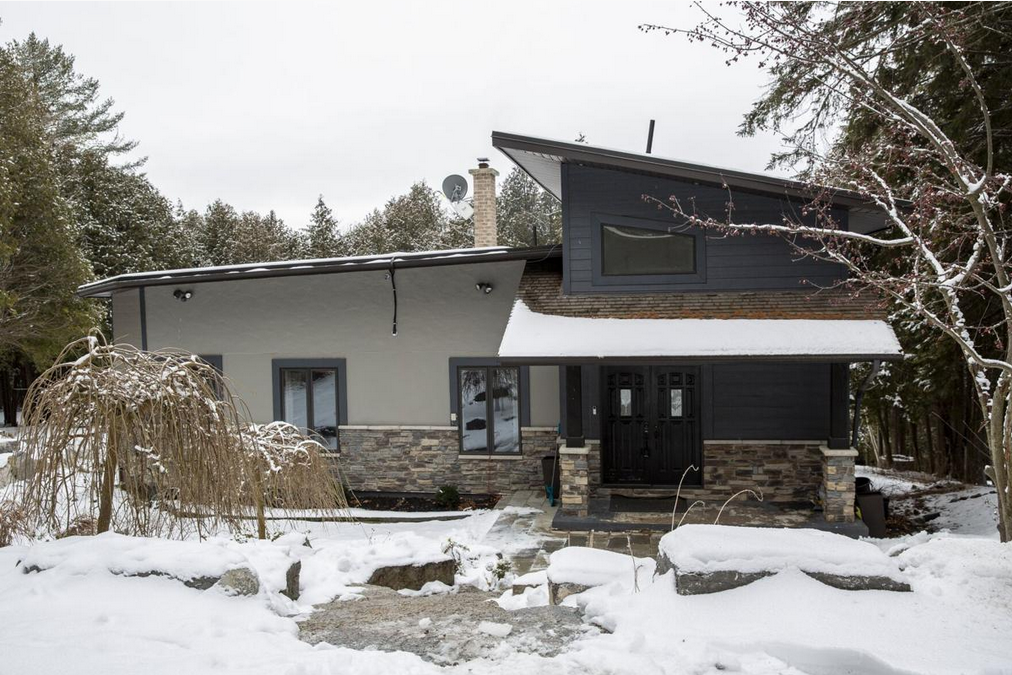 “Our dream green home stands as a testament to the possibility of creating a sustainable, healthy and modern living space for our family,” says Michelle Boodhoo, who lives there with her husband, Jason, and their two teenage sons.
“Our dream green home stands as a testament to the possibility of creating a sustainable, healthy and modern living space for our family,” says Michelle Boodhoo, who lives there with her husband, Jason, and their two teenage sons.
Their old house had burned through $4,000 worth of heating oil a year before it burned down because the oil tanks caught fire. With its beautiful setting on a nine-acre piece of heavily wooded conservation land the nature-loving family couldn’t imagine rebuilding anywhere else.
 Driven by a “green vision,” they also wanted to create an affordable custom home that would last a long time and be healthier for both occupants and the environment. “We really wanted to work with nature” and take advantage of the sun, says Michelle.
Driven by a “green vision,” they also wanted to create an affordable custom home that would last a long time and be healthier for both occupants and the environment. “We really wanted to work with nature” and take advantage of the sun, says Michelle.
What followed was hundreds of hours of research, design and sourcing eco-friendly materials as well as consultations with green builders. “I realized there are better ways to construct homes that aren’t the conventional way,” explains Jason, who did most of the design work, with input from Michelle. It took a year to build the almost 5,600 square feet of living space over two levels. The cost per square foot wasn’t much higher than for conventional construction.
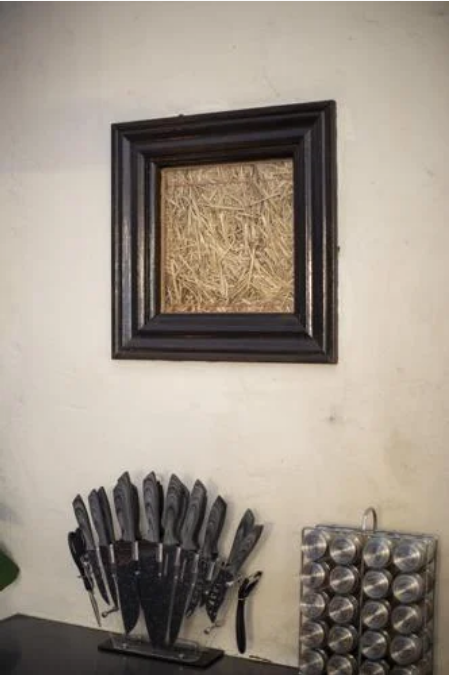 Three exterior walls are built of straw sandwiched between prefabricated, highly insulating concrete panels built off-site before installation. The closets are located on the north wall to provide an additional barrier, boosting the insulation value even further.
Three exterior walls are built of straw sandwiched between prefabricated, highly insulating concrete panels built off-site before installation. The closets are located on the north wall to provide an additional barrier, boosting the insulation value even further.
Combined with an insulated concrete form (ICF) foundation that uses interlocking foam bricks, the straw-bale walls create a “haven of energy efficiency” with year-round comfortable temperatures that are less reliant on the HVAC system, says Michelle. She estimates their savings on heating costs at 20 per cent to 30 per cent, depending on environmental factors. (Straw-bale homes typically use 25 to 40 per cent less heating and cooling energy than their frame-walled equivalents.)
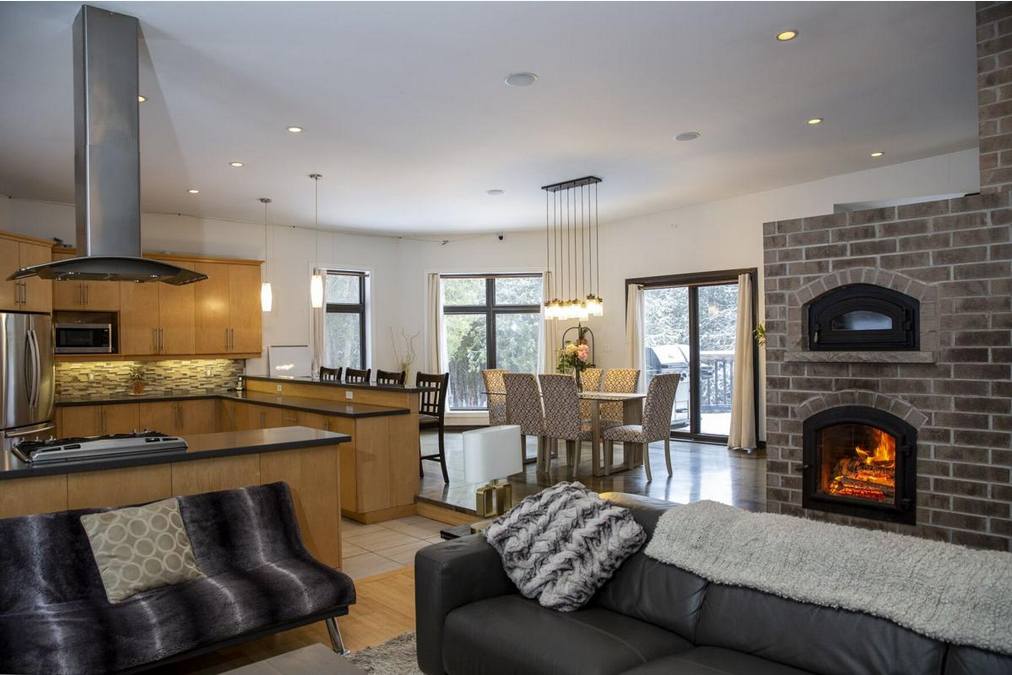 Its fourth exterior wall, a passive solar structure on the south side, is well-insulated with spray foam. With south-facing, high-efficiency windows, the sun’s energy infuses warmth into a concrete slab floor in winter while a roof overhang blocks the hottest rays in summer. Supplementary heat comes from a high-efficiency furnace and masonry wood-burning heater, known as a Russian stove, in the sunken living room.
Its fourth exterior wall, a passive solar structure on the south side, is well-insulated with spray foam. With south-facing, high-efficiency windows, the sun’s energy infuses warmth into a concrete slab floor in winter while a roof overhang blocks the hottest rays in summer. Supplementary heat comes from a high-efficiency furnace and masonry wood-burning heater, known as a Russian stove, in the sunken living room.
Some of the flooring is renewable bamboo, which is durable and easy to maintain. Various surfaces are covered with non-toxic finishes such as soy-based stain.
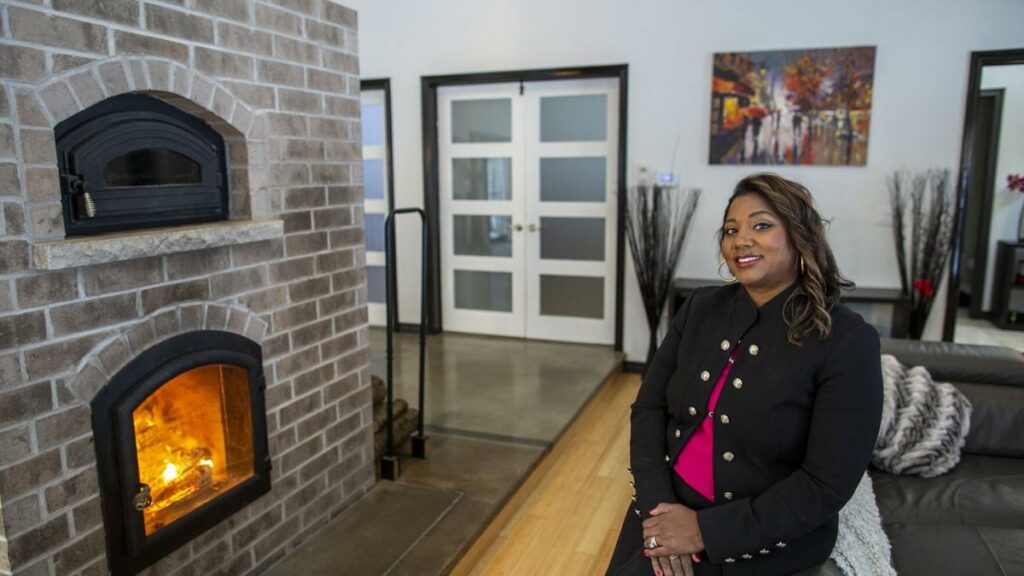 Looking back on a dozen years living in their forest retreat, the couple concludes its better air quality, circulation and cleaner feel have elevated everyone’s well-being. They love the passive solar and straw bale features in particular. “The natural esthetics of the straw bale walls contribute to a warm and inviting atmosphere,” notes Michelle, adding they’re also effective sound barriers.
Looking back on a dozen years living in their forest retreat, the couple concludes its better air quality, circulation and cleaner feel have elevated everyone’s well-being. They love the passive solar and straw bale features in particular. “The natural esthetics of the straw bale walls contribute to a warm and inviting atmosphere,” notes Michelle, adding they’re also effective sound barriers.
Most of their family time together is spent in the living room in the open-concept, high-ceilinged main floor. “We’re enjoying the best of all worlds,” says Jason. “It’s the old meeting the new. The quality of life is amazing.”
You can read the original article at www.thestar.com

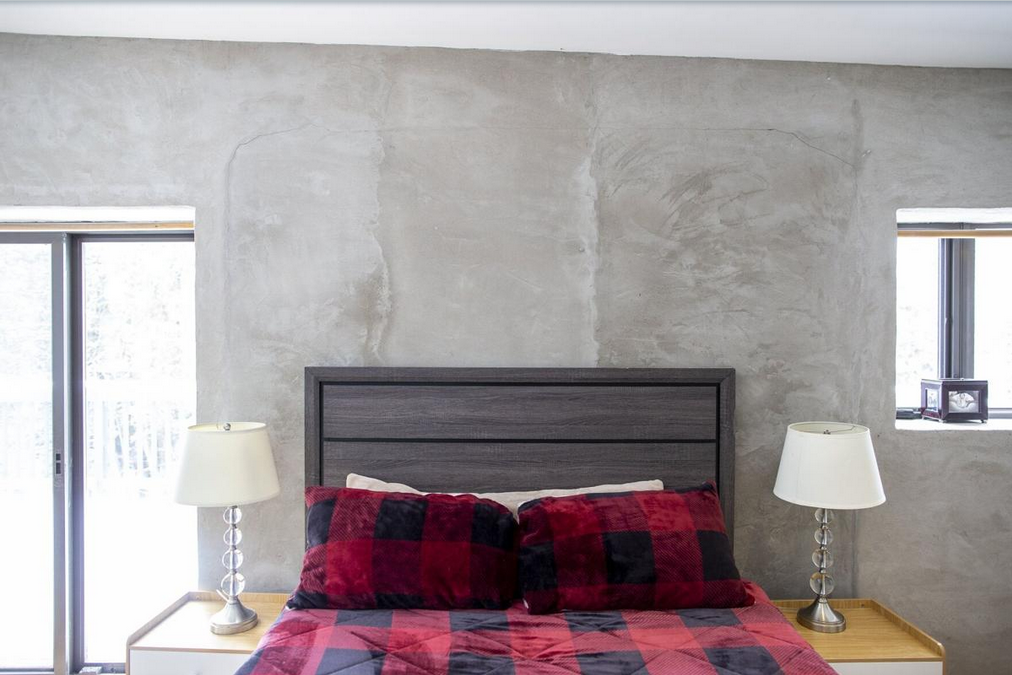
Wait, the family lost their house to fire, but they’re building out of a very flammable material? Please tell me that the strawbales are encased in a fire retardant material.
That said, the house looks spiffy!
As it says in the article, “Three exterior walls are built of straw sandwiched between prefabricated, highly insulating concrete panels built off-site before installation.” so they are encased in cement. But even if they weren’t, straw bale houses are highly rated against burning because they always are plastered and the dense straw provide very little oxygen for burning.